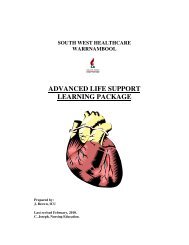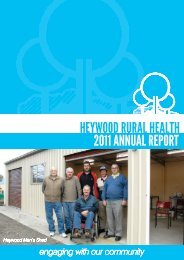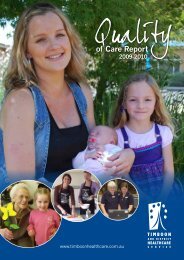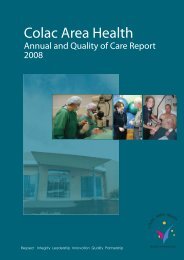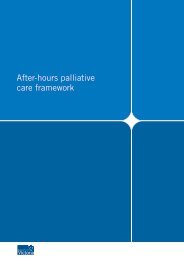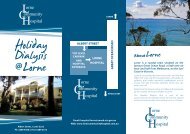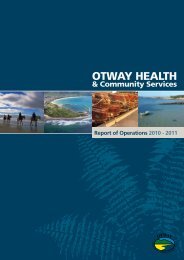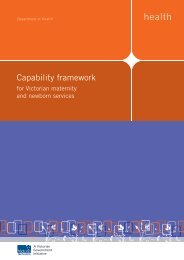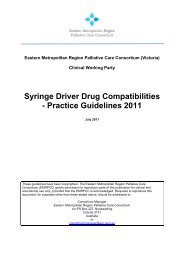Self Directed Learning Package - University of Queensland
Self Directed Learning Package - University of Queensland
Self Directed Learning Package - University of Queensland
- No tags were found...
Create successful ePaper yourself
Turn your PDF publications into a flip-book with our unique Google optimized e-Paper software.
75 • <strong>Self</strong> <strong>Directed</strong> <strong>Learning</strong> <strong>Package</strong> - Advanced Registered & Enrolled NurseDyspnoeaDyspnoea is an awareness <strong>of</strong> uncomfortable breathing. Itcan also be called breathlessness or shortness <strong>of</strong> breath.The evidence suggests that 70% <strong>of</strong> people receiving a palliativeapproach experience dyspnoea in the last six weeks <strong>of</strong> life. 5 Inthe terminal phase <strong>of</strong> ageing and/or illness, fear <strong>of</strong> suffocationmay be the most troubling symptom. This may significantlyaffect the ultimate place <strong>of</strong> death. The experience <strong>of</strong> dyspnoea(i.e. breathlessness) may not be directly attributed to a disease,because other factors such as anxiety exacerbate the symptoms.• Shortness <strong>of</strong> breath becomes more frequent in residentsas their disease progresses. It is associated with a poorerprognosis, and is usually multi-factorial in people withadvanced disease.• Dyspnoea frequently worsens as death approaches.• Dyspnoea can impair a resident’s activities <strong>of</strong> daily living, limitmobility, increase anxiety, and can leave them feeling fearfuland socially isolated.• It can also be a sign <strong>of</strong> a deteriorating condition in residentsreceiving a palliative approach.• Shortness <strong>of</strong> breath (dyspnoea) is frightening for patients.They may fear suffocation, and they <strong>of</strong>ten associate dyspnoeawith impending death. Dyspnoea can be both longstandingand progressive (related to the disease progression), or it canbe an acute problem appearing suddenly.• Dyspnoea triggers panic, and panic exacerbates dyspnoea, sothe pattern becomes cyclical.• Dyspnoea may also be a distressing and frighteningsymptom for the family. This can lead to increased anxietyfor the resident which may increase their dyspnoea. Familymembers’ perceptions <strong>of</strong> a resident’s suffering can influencehow the family makes meaning <strong>of</strong>, and come to terms with,the dying experience <strong>of</strong> the resident.



